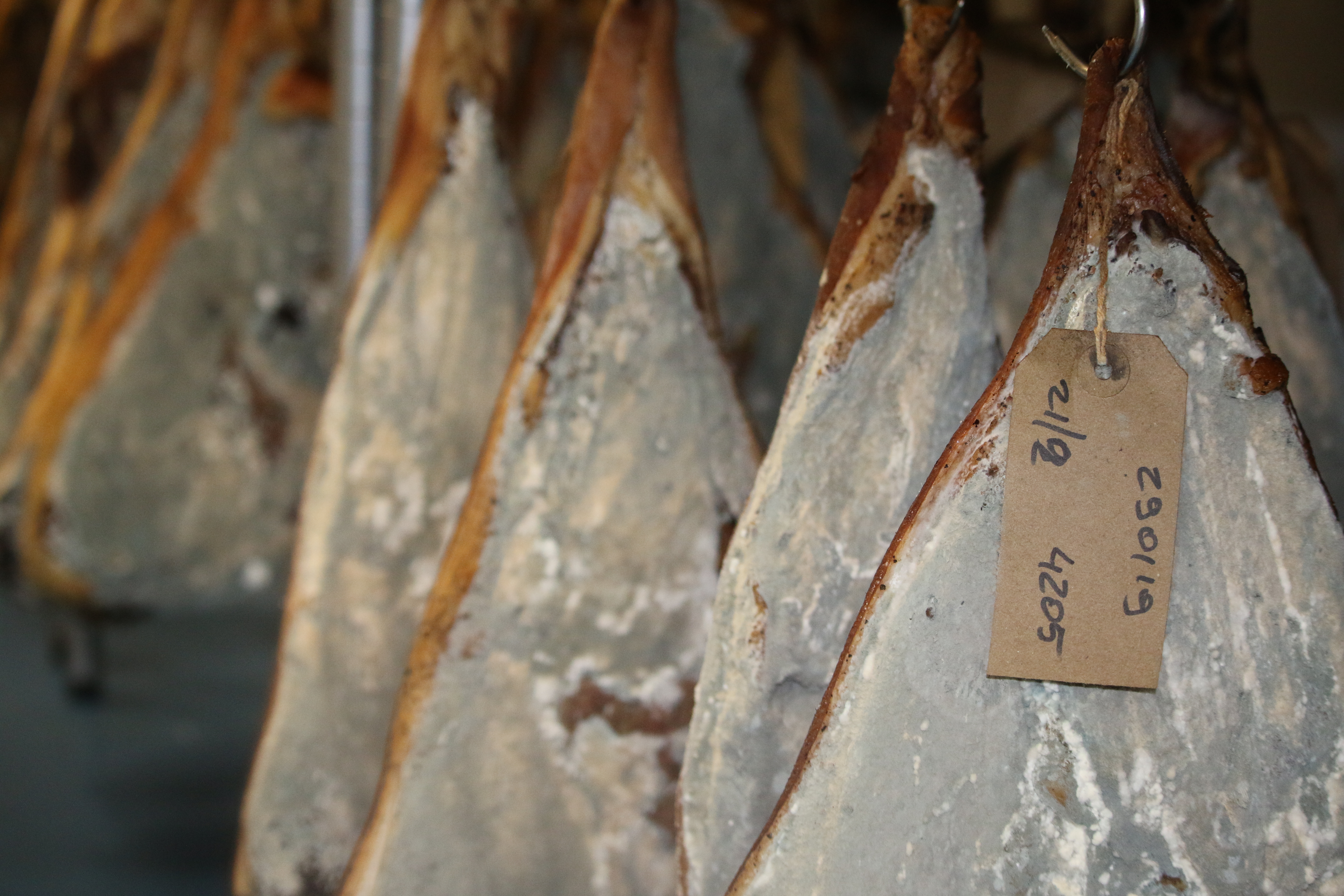



Study shows low-protein swine diets reduce release of Nitrogen compounds whilst maintaining high-quality hams
The study, published in Scientific Reports in December 2019, showed that reducing the crude protein of pig diets by 20 percent resulted in only small differences in ham quality.The use of low protein and low amino acid feeds (LP) in pig nutrition is a successful strategy for reducing the release of Nitrogen-containing compounds into the environment. One concern with changing the feed composition for finishing pigs is the potential impact on meat quality, which includes but is not limited to weight, back-fat cover and marbling of the raw material. Previous studies have indicated that LP diets result in an increase in fat cover thickness and intramuscular fat which is known to reduce water loss during the curing process thereby improving the final quality of the product. This said, it is important to fully understand the impacts of reducing dietary protein on meat quality as a matter of urgency, with this solution being described as one of the best strategies to reduce the environmental impact of pig farms.
Dry-cured ham is a traditional and popular product in many Mediterranean regions, the quality of which is dependent on a combination of factors, including pig genotype, feeding and management practices, and curing processes.
The current study, run by researchers at the University of Padova and the University of Milano, aimed to investigate the influence of LP diets on the characteristics of dry-cured hams obtained from two breeds of pigs with different lean growth potential.

The study analysed 40 left dry-cured hams from pigs of two breeds [Duroc-Danbred crosses (Danbred) and Duroc × Large White crosses (Anas)] fed either conventional (147 to 132 g/kg, crude protein) or LP diet. The LP had a crude protein content reduced by 20 percent with respect to the conventional diet.
Results
The results of the experiment indicate that the low protein (LP) diet had little overall influence on the chemical and physical profile of the dry-cured hams.
- The protein content and the protein to lipid ratio of the whole slice decreased for hams produced with an LP diet, and there was a tendency towards an increased lipid content with the conventional diet.
- Previous work has already reported that LP diets increases the proportion of fat in pig carcasses and in the meat. According to the report, these increases would depend on the replacement of some protein sources with carbohydrates, which are more easily converted to fat.
- This said, the results of the current experiment suggest that the response to LP diets is at least partially dependent on the breed of the pig, as the meat from the Danbred pigs was less impacted by the LP diet compared to the meat from the Anas pigs.
Impact of genetics
Pigs with a different genetic make-up differ in growth rates, carcass composition, lean/fat ratios and adipose tissues characteristics - each impacting the final market product. When it comes to dry-cured hams, meat from lean pig genotypes is less suitable for curing because a lower subcutaneous fat cover is associated with seasoning losses, high salt absorption, increased dehydration and hardening of the meat. On the other hand, high fat cover and high intramuscular fat content can be a barrier to water and salt penetration, which can also result in seasoning losses.
- In the current experiment seasoning losses were 4 percent higher in the Danbred than in the Anas hams, reflecting the leaner characteristics of the Danbred breed.
- Despite the initial weight differences, at the end of seasoning the ham weight of the two breeds did not differ.
- At the end of seasoning, the lipid and the protein content of the ham lean part did not differ in the two breeds, but the Danbred ham still tended to be 5 percent richer in protein and 10 percent poorer in lipid content than that from the Anas pigs, reflecting the different fat cover of the hams produced by the two breeds. This result was consistent with the values of fat thickness measured on the fresh hams.
- The fatty acid profiles of the various fatty depots in the ham showed there to be an 8 percent greater proportion of polyunsaturated fatty acid in the Danbred than in the Anas hams, consistent with the observation that a reduction in back-fat thickness is associated with an increase in the proportion of polyunsaturated fatty acid.
Conclusions
There is potential to use LP diets in Italian classified Protected Designation of Origin (PDO) dry-cured ham production as it reduces the Nitrogen-containing compound release into the environment but has little influence on several chemical and physical attributes of the hams. The study indicates that breed characteristics play a greater part in determining the meat quality as opposed to diet.
This said, further research is required to fully evaluate the influence of each factor on the sensory and eating properties of dry-cured hams.
| References | ||||
|---|---|---|---|---|
| Giuseppe Carcò, Stefano Schiavon, Ernestina Casiraghi, Silvia Grassi, Enrico Sturaro, Mirco Dalla Bona, Enrico Novelli & Luigi Gallo | ||||
| (2019) | Influence of dietary protein content on the chemico-physical profile of dry-cured hams produced by pigs of two breeds. Scientific Reports | 9:19068 |









